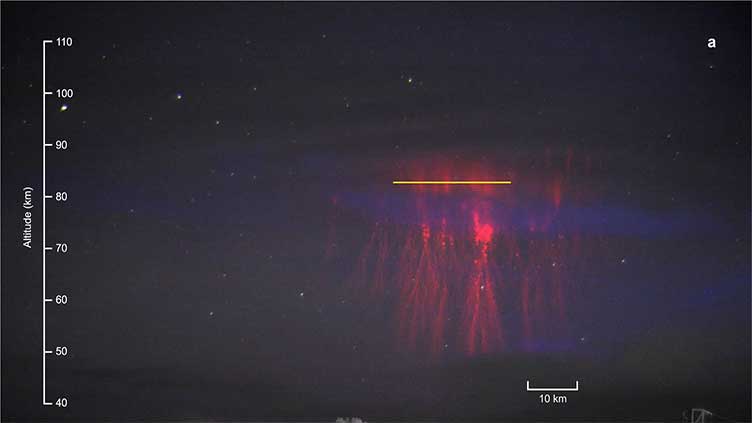In 2019, green 'ghosts' appeared in sky. Now, scientists think they know why

Technology
Scientists suspected that electrically charged oxygen may create the green tinge
(Web Desk) - In 2019, scientists revealed a curious and unnerving phenomenon happening in the sky above Earth: Green, glowing ghost-like shapes flickering high over a thunderstorm. Now, they think they know why.
These ghosts are not phantoms — rather, they’re bright bursts of green lightning called mesospheric ghosts that occur alongside another colorful form of lightning, known as red sprites, in an area of the atmosphere known as the mesosphere, which is some 30-50 miles above Earth.
Unlike typical lightning, these ghosts are as rare as they are colorful. When they were first observed four years ago, scientists suspected that electrically charged oxygen may create the green tinge, but it turns out the truth is a little more complicated.
In a new paper published in Nature Communications on Tuesday, a team of Spanish scientists describe how they spent the last four years monitoring storms, searching for ghosts.
They identified 42 incidents but only one was strong enough to be studied in depth — "jellyfish sprite,"a bright red flash of lightning that appears to have the tendrils of its namesake, that was immediately followed by a ghost above the Mediterranean Sea.
The team went to work analyzing the chemical signatures in the ghost's light to see what may be lending the phenomenon its stunning colors.
They found that while oxygen did play a role in the green hues, it wasn’t alone: iron, nickel, and nitrogen — all of which came from via tiny meteors that burned up in the atmosphere — were also present, speaking to our planet's place and interactions with the solar system.
While this discovery might not require an exorcist, it does have larger ramifications: The authors point out that our current models of the phenomena that occur in our atmosphere need to be updated — and there may be other discoveries waiting to be made.


